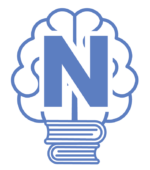Do you get distracted easily? Are you great at making to-do lists but you still can’t seem to get stuff done? Do you spend more time procrastinating instead of doing? The good news — there’s a productivity method out there for you no matter what your personality.
The key is to find a system that fits who you are and how you work. Some people respond best to quick and simple solutions, like setting a timer and splitting their work into sessions. Others are visual learners, and process information better when they can see it laid out in front of them. Then there are those who prefer to slowly build productivity habits over time.
Read on to discover which productivity method is best for you, organized by personality or task type.
1. You want more time to work on passion projects
Zen to Done
What it is
Zen to Done is based on the idea that to be more productive, you need to build a set of core habits to change how you approach work and tasks over time.
How it works
This productivity method involves 10 steps (i.e. habits):
- Collect — write down any ideas, goals, thoughts, or tasks in a notebook. Transfer these to your to-do lists.
- Process information daily — go through your emails, voicenotes, and any other inboxes every day, deleting those you don’t need.
- Choose 1-3 big “rocks” — the big tasks — you hope to accomplish that week and add them to your calendar. Do the same every day — identify 1-3 main tasks you want to get done that day.
- Work on one task at a time without distractions (you can use a timer system here to take frequent short breaks between work intervals).
- Keep on track with simple to-do lists that you check daily
- Organize your physical and digital space — have a place for everything to avoid papers cluttering your desk or unimportant emails clogging up your inbox.
- Review your goals and progress weekly
- Cut down your list and only include the most important tasks
- Create and keep routines — perhaps your morning routine includes going over your to-do list, clearing your email inbox, and getting through one of your main to-dos.
- Use your lists to discover your passion — what tasks bring you the most joy? The more you love what you do, the more productive you’ll end up being.
The idea is to implement each habit slowly, focusing on 1 or 2 a month. That way you won’t get overwhelmed and you’re more likely to stick with the habits in the long run.
Who it’s best for
- You aren’t looking for a quick fix solution and you’re okay to take the time to slowly build daily habits. Patience and commitment go a long way with this method.
- You haven’t yet found the career or work that inspires you. Zen to Done could help you create a roadmap to your dream job.
Must, Should, Want
What it is
Must, Should, Want is a simple goal-setting method that helps you prioritize what you want to achieve in both the short- and the long-term.
How it works
Each morning, write down the following:
- I must _____ (important tasks that must be done soon)
- I should _______ (important tasks that don’t need to be done immediately)
- I want ________ (something you’re passionate about, like wanting to write 20 pages of your novel. It isn’t time-sensitive — this one’s just for you)
That evening or the following morning, review your tasks and assess your progress. Then create your next “Must, Should, Want” list for the upcoming day.
Who it’s best for
- You tend to procrastinate and feel daunted by a long to-do list.
- You struggle to find time to work on personal projects you’re passionate about.
2. You’re a World-class Procrastinator
Pomodoro Technique
What it is
You may be familiar with those small tomato-shaped kitchen timers, which is where the Pomodoro Technique gets its name (“pomodoro” is Italian for tomato). This time management tool staves off mental fatigue and keeps you focused by alternating work sessions with frequent breaks.
How it works
Set a 25-minute timer and work on one task until the timer is up. Take a 5-minute break, before setting the timer for another 25-minute work session. After 4 cycles of work, take a longer break of 15-20 minutes.
Who it’s best for
- You find your concentration regularly takes a dip or you’re easily distracted during the day.
- You tend to procrastinate. With this method, knowing you have a break coming up makes it less likely that you’ll check your email or scroll through Instagram before the timer rings.
Want to increase your focus? Take this quiz to find out which supplements will help you resist distractions and get it done already.
Eat That Frog
What it is
Eat That Frog encourages you to tackle the hardest and most important task on your list first, before you do any other lesser tasks. If you leave it till later, you’re more likely to procrastinate instead of simply getting it done.
How it works
First, you figure out your “frog” – the most difficult, essential task of the day. Then complete that task first thing in the morning, before you tackle anything else with zero distractions. Repeat the following day with a different task.
Who it’s best for
- You struggle with procrastination.
- You’re good at getting stuff done but you neglect the important tasks.
- You get easily overwhelmed by to-do lists.
- You like the idea of a simple method that is easy to implement and maintain.
Single-tasking
What it is
Your brain doesn’t do well with multi-tasking. Every time you switch tasks, your productivity takes a hit[1]https://www.ncbi.nlm.nih.gov/pmc/articles/PMC7075496/. Single-tasking encourages you to focus on one task fully for a set period of time, without any distractions. It’s similar to the Pomodoro Technique, but you get to decide how long to set the timer for and how long you’ll break for.
How to do it
To single-task, follow these steps:
- Remove any and all distractions, such as open browser tabs on your computer or your phone.
- Start with short timed sessions — just five minutes of intense focus can be effective. You can extend the time of your work sessions as you get the hang of it.
- Take regular breaks away from all screens.
Who it’s best for
You have a hard time focusing and tend to jump from one task to the next.
You get easily distracted and need to work in a quiet, distraction-free environment.

3. You’re a Visual Learner
Personal Kanban
What it is
Personal Kanban is a productivity system that helps you visualize your work and track your progress on specific tasks.
How to do it
You want to find a flat surface like a whiteboard, corkboard, or a wall. You’ll be writing your tasks down on post-it notes and sticking those notes in various columns on the board. A typical Kanban board has three columns:
- To-do — all the tasks you need to complete, organized from most important to least pressing.
- Doing — move the tasks to this column once you start working on them.
- Done — move all your completed tasks to this column.
Who it’s best for
You’re more of a visual learner and process information best when you see it.
You’d prefer a simple productivity method that’s easy to implement.
4. You Work in a Highly Technical Profession
The Checklist Manifesto
What it is
The Checklist Manifesto was created by surgeon Atul Gawande to minimize mistakes in the operating room, the idea being that even experts benefit from detailed checklists to help them get through a complex task.
How to do it
Create a detailed checklist for every complex task or routine to serve as a guide while you work. For instance, if you need to create a slideshow for work, write down every step of the process, such as dividing the slides into three sections, deciding what each section will say, adding graphics, saving the file, and reviewing it.
Who it’s best for
While this technique can be used in any field, it’s best for those working in complex professions like medicine or aviation.
5. Your Schedule, Your Way
Biological Prime Time
What it is
With Biological Prime Time, you schedule your most important and demanding tasks during the time of day when you have the most energy.
How to do it
Track your energy levels for three weeks and notice when in the day you have the most amount of energy. Perhaps you’re a night owl, and 6-9pm is your sweet spot. Or maybe you’re more of a morning person, and you wake up raring to go for the day. Notice when during the day you have energy peaks and when your energy dips. Next, you’ll create a schedule around your energy levels: schedule more demanding tasks during the time when you have the highest amount of energy, and less intensive tasks during periods of lower energy.
Who it’s best for
- Other productivity methods haven’t been very effective for you, because you’ve had to follow someone else’s schedule and working rhythm.
- You notice you have way more energy at certain times of the day.
You may need to try out a few productivity methods before finding the one that’s right for you, and that’s okay. The important thing is to stick with one for at least a month before calling it quits – it can take time and patience to build new habits.

References

